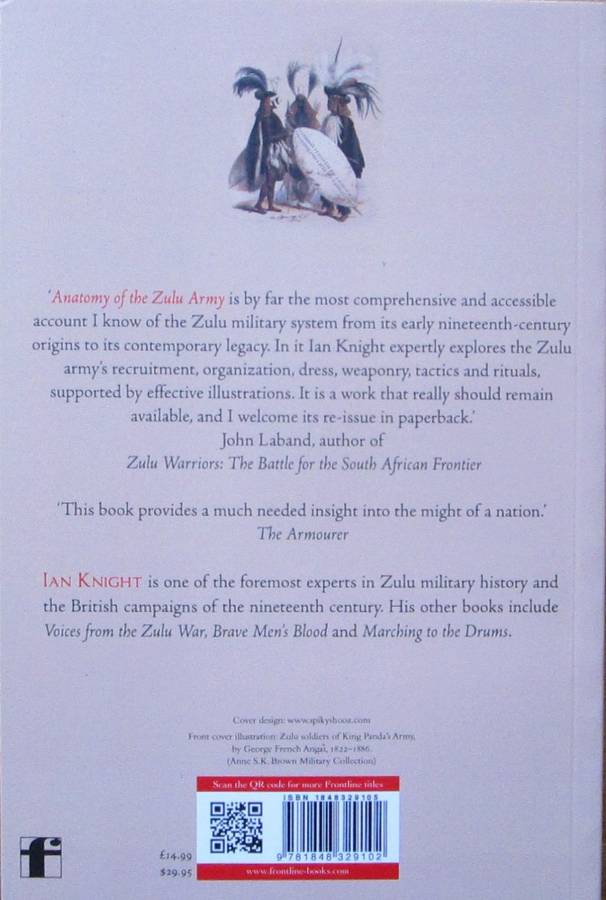



THE ANATOMY OF THE ZULU ARMY from Shaka to Cetshwayo 1818 - 1879
Check my rate
View locations
| Main centres: | 1-3 business days |
| Regional areas: | 3-4 business days |
| Remote areas: | 3-5 business days |




| Main centres: | 1-3 business days |
| Regional areas: | 3-4 business days |
| Remote areas: | 3-5 business days |
Author - Ian Knight
Publisher - Frontline Books: 2015, Revised edition.
A new trade paperback.
Know your enemy is a fundamental mantra of soldiering. Lack of knowledge, or under-estimating capabilities, can have disastrous consequences as the British discovered following the opening salvoes of the Anglo-Zulu war in 1879. Despite his extensive campaign experience on the continent of Africa, the British commander Lord Chelmsford had failed to comprehend that the Zulu were unlike any of the foes he had encountered on earlier wars. In The Anatomy of the Zulu Army Ian Knight explains what made the Zulu such an effective fighting force. Forces of the independent Zulu kingdom inflicted a crushing defeat on British imperial forces at Isandlwana in January 1879.
The Zulu Army was not, however, a professional force, unlike its British counterpart, but was the mobilized manpower of the Zulu state. Ian Knight details how the Zulu army functioned and ties its role firmly to the broader context of Zulu society and culture. The Zulu army had its roots in the early groups of young men who took part in combats between tribes, but such warfare was limited to disputes over cattle ownership, grazing rights, or avenging insults. In the early nineteenth century the Zulu nation began a period of rapid expansion, and King Shaka began to reform his forces into regular military units. Ian Knight charts the development and training of the men that formed the impi which later operated so successfully under King Cetshwayo. His analysis of the Zulus fighting methods, weapons and philosophy, all of which led to the disciplined force that faced the British army in 1879.
284 pages with 48 pages of illustrations and including bibliography and index.

